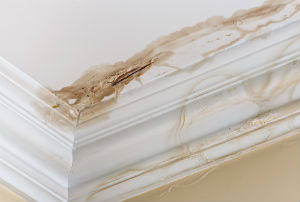THE BLOG

The Right Components Of Proper Roof Installation. Are you protected?
Now that winter has finally arrived in Morristown, New Jersey, brining all the fury of the season, roofs are put to the test by high winds, driving rain, sleet and snow. Aesthetics aside, the main reason we have a roof over our heads is to keep the weather out, right?
One of the key components that insures we’ll never have to make that dreaded phone call when suddenly you hear that drip, drip, drip, or like one Randolph homeowner experienced over the holidays while erecting the family Christmas Tree, taps of water hitting his head during the process, is a product known as ice & water shield, also known as moisture barrier.
Ice & Water Shield is a rubber membrane with a mineral top and an adhesive back, typically in fifty foot rolls by three feet wide. Atlas Roofing manufacture’s a product called Weathermaster®200, as does GAF, Tamko and Certainteed under various names.
The purpose of ice & water shield is to prevent leaks along key areas of the roof. Eaves/gutter lines, and valleys are the primary areas of concern as well as roof to wall transitions or sidewalls. Depending on the pitch or slope of the roof some manufactures recommend using the protective underlayment on the entire deck surface.
The product is applied at time of installation. In a replacement scenario, once the old shingles and underlayments have been removed, ice and water shield is then applied. Starting at the eves/gutter line the rolls are aligned. Once in place the peel back layer is removed to expose the self-adhesive bottom, and then applied.
Codes vary from state to state, in Morris County, NJ ice and water shield needs to be installed a minimum of 24 inches from the inside wall. This is crucial to know because often a standard three-foot roll will not achieve this depth, for a multitude of reasons, so additional membrane will need to be added to meet the 24 inch building code requirement.
Valleys are areas where water cascades, especially in heavy downpours, and sometimes can pool near eves or roof to wall transitions. It’s required for ice and water shield to be placed one foot on each side of the valley so it will properly protect the homes interior.
Ice and water shield works to keeps water from intruding by coating the roof nail. Once the membrane is installed, in the case of an asphalt shingle installation, the shingle is laid over the membrane. The nail is then shot through the asphalt shingle, and the ice and water membrane. In the advent of pooling water or ice damming, the nail can no longer be a conduit for water infiltration.
Another application is to use ice and water to flash all roof protrusions, such as vents and pipe flanges, and skylights.
A reliable roofing contractor will make sure ice and water is present and properly installed insuring that you will have years of protection for your home or office.
Want to know more about K&B Home? Contact us for a free roofing consultation and quote.
About webmaster
